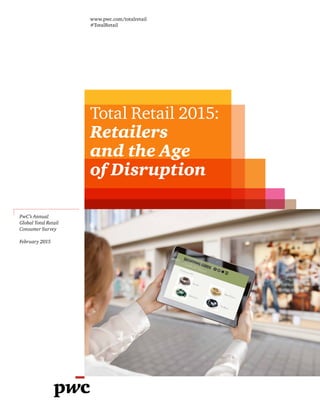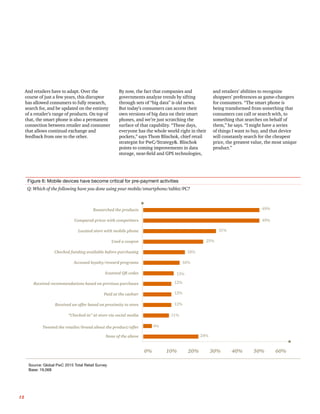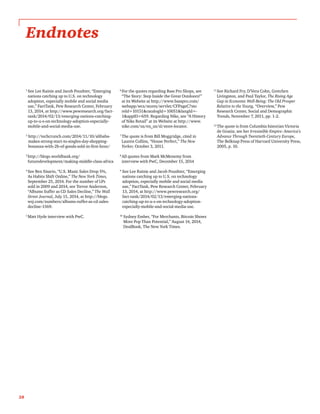The 2015 PwC Total Retail report explores four major disruptions affecting retailers: the evolving role of physical stores, the rise of mobile technology, the impact of social networks, and demographic changes. As online shopping grows, retailers must focus on creating unique experiences to meet changing consumer expectations while adapting to demographic shifts and leveraging mobile and social technologies. The survey encompasses insights from over 19,000 global respondents, highlighting the need for retailers to embrace these changes to remain competitive.



































